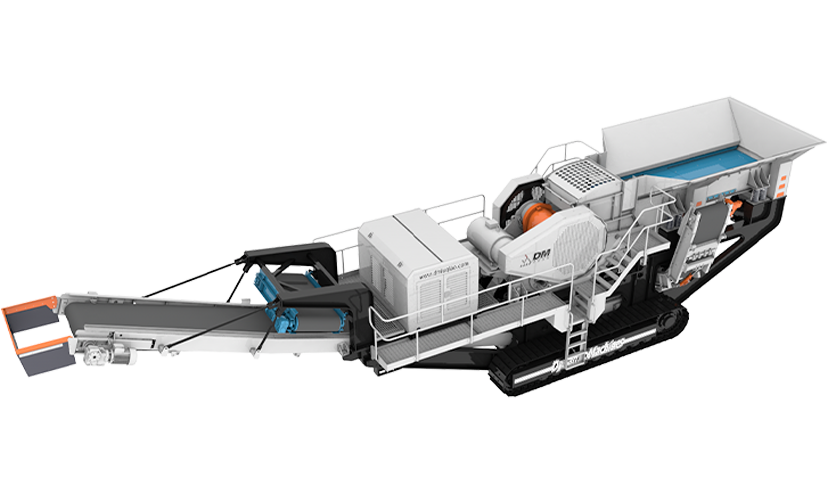Machinery Weight 55-72t
Max Feeding size(mm) ≤700mm
Hopper Volume(m³) /
In the mining and construction sectors, raw materials vary significantly in hardness, size, and abrasiveness. Mobile Impact Crusher Factory equipment is engineered to process a wide range of materials, from soft limestone to highly abrasive granite or recycled concrete. Understanding how these crushers behave when handling materials of different hardness is essential for optimizing production efficiency, reducing wear, and ensuring consistent product quality. The performance of mobile impact crushers can vary in terms of throughput, energy consumption, and component wear, depending on the hardness of the material being processed.

Soft materials such as limestone or sandstone are generally easier to break and allow mobile impact crushers to operate at higher throughput rates. These materials require lower impact forces, which translates into reduced stress on the rotor, blow bars, and impact plates. Conversely, harder materials such as granite, basalt, or certain types of recycled concrete demand greater impact energy to fracture. The machine may experience reduced throughput because the material takes longer to break, and higher energy consumption is necessary to achieve the same particle size. Operators must adjust feed rates and rotor speed to balance efficiency and performance when processing harder materials.
Material hardness also directly affects wear on critical components. Softer stones generally cause less abrasion, allowing blow bars, impact plates, and liners to last longer. In contrast, harder or highly abrasive materials accelerate wear, requiring more frequent inspection and replacement of wear parts. Mobile Impact Crusher Factory typically addresses these challenges by using high-chromium alloys or manganese steel for key components, combined with reversible or adjustable parts that can be rotated to improve lifespan. Understanding the expected wear for different material types allows operators to plan maintenance schedules more accurately and reduce unplanned downtime.
Adjusting operational parameters is essential to optimizing performance across varying material hardness levels. For softer materials, operators may increase feed rate and rotor speed to improve throughput. Harder materials, however, often require slower feed rates and reduced rotor speed to prevent overloading the crusher and to ensure uniform particle size. Hydraulic adjustment systems can help fine-tune the gap between the rotor and impact plates, allowing the machine to handle different materials efficiently without compromising output quality.
Processing harder materials generally causes higher energy consumption, as more force is required to break the material into the desired size. This increased demand can influence operational costs and may also necessitate more frequent component maintenance. Soft materials, while less demanding on energy, can still affect efficiency if the crusher is not properly configured for high-speed operation. Mobile Impact Crusher Factory designs must therefore incorporate flexibility in power management and monitoring systems to adapt to these varying material conditions.
The performance of mobile impact crushers varies significantly depending on the hardness of the material being processed. Softer materials allow higher throughput and lower wear, while harder, more abrasive materials require careful adjustment of operational parameters and increase component wear. Mobile Impact Crusher Factory designs integrate durable materials, adjustable components, and flexible control systems to manage these differences effectively. By understanding how material hardness influences efficiency, wear, and energy consumption, operators can optimize production schedules, reduce maintenance costs, and ensure consistent quality across diverse crushing applications.
Machinery Weight 53-62t
Max Feeding size(mm) ≤600mm
Hopper Volume(m³) 80-360t/h
Machinery Weight 55-57t
Max Feeding size(mm) ≤215mm
Hopper Volume(m³) /
Machinery Weight 33-35t
Max Feeding size(mm) 150-400t/h
Hopper Volume(m³) 2.5
Machinery Weight 33t
Max Feeding size(mm) 150-400t/h
Hopper Volume(m³) 7m³
Machinery Weight 54-63t
Max Feeding size(mm) ≤600mm
Hopper Volume(m³) /
Machinery Weight 9.5-75t
Max Feeding size(mm) ≤1000mm
Hopper Volume(m³) 61-1204t/h
Just let we know what you want, and we will get in touch with you as soon as possible!